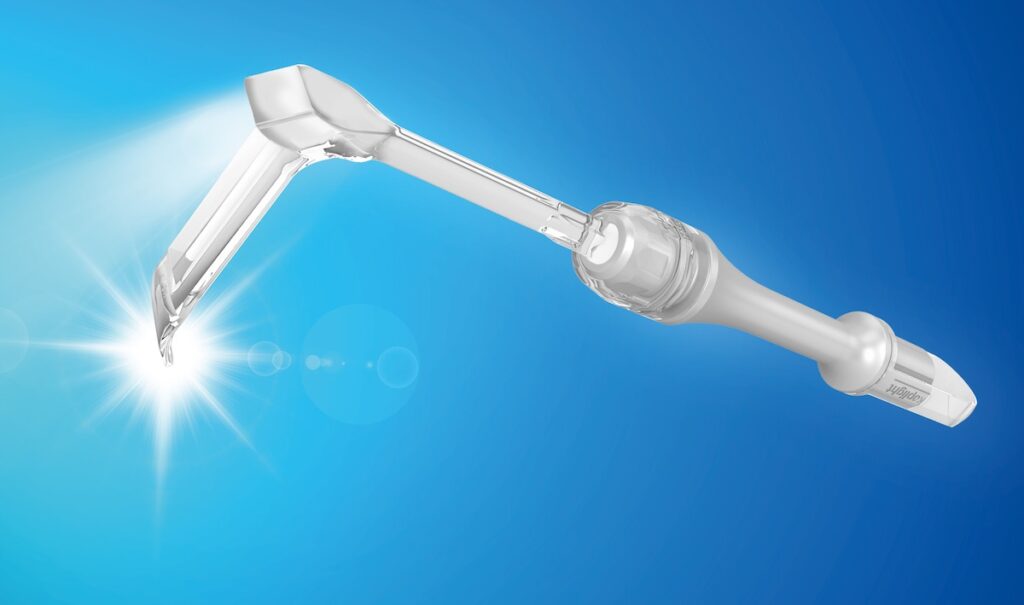Japan’s reputation for precision engineering, innovation, and strict quality control has made “Made in Japan” synonymous with excellence in medical technology. For surgical and other medical devices, Japanese manufacturers use rigorous standards, ensuring that new tools are innovative and exceptionally well-built.
This article looks into innovative Japanese medical devices and explains our made-in-Japan Yasui koplight™.
Contents
Why “Made in Japan” indicates quality and trust
Japan’s reputation for precision manufacturing and rigorous oversight shapes how clinicians and buyers view its medical devices. The national market is valued at around USD 47 billion in 2024 and is forecast for steady growth through 2034. Japan’s post-pandemic innovation highlights healthcare has proven to be a pillar of resilience and export strength.
For hospitals and distributors, these signals translate to predictably high-quality systems and devices, reliable supply, and a culture of continuous improvement (kaizen) that supports safe adoption.
1. Robotics and surgical assistance
Japan’s robotics programs tend to focus on compact footprints, streamlined setups, and ergonomics that help surgical teams adopt minimally invasive systems. Adoption first grew in high-volume specialties such as urology and gynecology, where stable magnified control supports precise dissection and suturing.
Next-generation robotics include Japan-originating platforms with console ergonomics and instrument dexterity that meet surgeon demands. Three pillars are key in surgical systems: compactness, safety, and maneuverability, which matter to OR directors balancing space, turnover time, and budget. Expect the next wave of innovations to bring more compact robotic platforms, quicker docking, and better instrument economies that lower barriers for regional hospitals.
Hospitals in Japan have conducted trials of robotic support in gastrointestinal and thoracic surgery. Japan’s first domestically developed surgical robot gained approval in 2020 and its clinical use has since expanded, with adoption across dozens of hospitals in Japan. Training pathways often include simulation labs and structured mentoring by experienced robotic surgeons. Procurement contracts typically include bundled service agreements that cover instrument replacement and software upgrades. These recurring costs influence long-term value assessments and make cost transparency a priority for purchasing committees.
2. Imaging and visualization systems
Visualization defines surgical safety. Japanese developers have led the move from optical eyepieces to digital exoscopes that project ultra-high-definition 3D images on large monitors. A 4K-3D system allows the entire team to share the same view and let surgeons work in a heads-up posture that reduces strain.
Government media also describe the extension to 8K surgical imaging that aims to reveal small vessels and nerves for delicate work. For buyers, the specifics matter: 4K–8K sensors, LED light engines, lighter arms, and monitor stacks that fit crowded theaters. For training, heads-up displays let assistants and fellows see exactly what the lead surgeon sees, which supports safer handoffs and education.
2. Illumination and retraction technologies
Deep or narrow operative fields often suffer from shadows and repeated light adjustments. At Yasui, we have addressed this with our handheld retractor that emits light at the point of work.

Surgeons and OR staff often struggle with positioning overhead lamps or flashlights to see into a deep incision. The koplight™ lighted retractor from Yasui brings the light source inside the patient’s body.
The koplight™ is a handheld surgical retractor with integrated LED lighting, powered by a small battery in its handle. Unlike traditional metal retractors, which simply hold tissue aside, the clear polycarbonate blades of the koplight™ actually illuminate the operative field directly where surgeons need it. The targeted lighting can greatly improve visibility in deep or narrow spaces, such as during breast, thoracic, oral, and cosmetic surgeries.
Another innovative aspect is the material: the retractor blades are made of a durable medical-grade plastic rather than metal. This makes them transparent in X-rays and doesn’t interfere with imaging. Surgeons can take intraoperative fluoroscopy or CT scans without a metal tool blocking the view. The nonconductive plastic also reduces the risk of cautery (electric scalpel) burns.
Surgeons who have used the koplight™ report that it’s lightweight and easy to maneuver, and its cordless design eliminates cumbersome cables during sterile procedures. The koplight™ combines two functions (retraction and illumination) in one device, exemplifying the clever problem-solving of Japanese medtech. The innovative design makes surgery brighter and potentially safer. Contact us for more information about using the koplight™ in your country.
4. Artificial intelligence in surgery
Japan’s AI initiatives have moved from research into clinical use. Real-time AI that overlays guidance during endoscopic surgery was developed in Tokyo, with systems that can mark tissue boundaries and highlight structures on the live feed to reduce cognitive load. Meanwhile, Japanese policy work aims to balance patient privacy with responsible data access for AI in care delivery, a key issue for scaling surgical decision support.
For hospitals, the checklist includes networking capacity in the OR, data retention policies, user training, and verification steps that ensure the team treats AI as an assist, not an authority.
Examples from endoscopy centers in Tokyo show how AI can highlight polyps during colonoscopy or delineate tumor margins during laparoscopic resections. These tools can reduce oversight errors and support decision-making. Hospitals that adopt AI often combine it with large video archives for training, which means storage infrastructure becomes a procurement issue.
5. Biomaterials and regenerative devices
Material science is a quiet engine of surgical progress in Japan. In 2023, regulators approved a cardiovascular patch for pediatric congenital heart surgery that uses a textile-based scaffold designed for durability and growth with native tissue. These patches blend absorbable and non-absorbable fibers, plus biocoatings such as gelatin, to encourage host cell ingrowth while preserving mechanical strength. For distributors, details such as shelf life, storage conditions, and size matrices drive stocking decisions. For surgeons, handling matters: suture retention at small needle sizes, cut-ability without fraying, and predictable thickness that matches delicate pediatric anatomy.
Japan’s biomaterials sector also includes bone graft substitutes, bioresorbable vascular scaffolds, and skin regeneration matrices. Investment in regenerative medicine links device innovation with cell therapy, creating hybrid solutions that combine scaffold and biologic components. For distributors, this intersection signals a market where device supply chains may need to coordinate with biologics logistics, which adds layers of complexity in storage and transport.
Made in Japan innovation – Futuristic, practical, and high-quality
Japanese innovation in medical devices tends to favor practical problem‑solving: compact robotics, heads‑up imaging, smarter lighting, tissue‑friendly materials, data‑driven guidance, reliable vessel control, and integrated grafts.

Innovaitons such as our Yasui koplight™ shows how a simple idea – light where you need it – can change everyday steps in the OR. For distributors and clinical teams, watching Japan’s medtech output offers a steady stream of actionable ideas you can adopt, evaluate, and scale in real care settings. Get in touch to see how to put this Japanese tech to work in ORs in the US and in other countries where it’s available.

